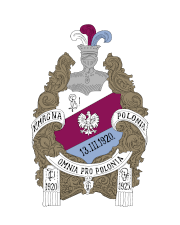Academic corporations
Academic corporations are associations of students and graduates of universities. Their roots go back to the Middle Ages, when students studying at European universities gathered in the so-called nations (Latin: nationes, bringing together people coming from the same regions). Members of individual nations were distinguished by characteristic elements of clothing (so-called caps, bands), as well as their own rituals and cultivated traditions. In the spirit of mutual solidarity, they provided mutual assistance, primarily in the field of science, but also financially. Over time, nations began to transform into the so-called compatriots (German: Burschenschaft), and these – at the beginning of the 19th century – into corporations that still exist today.
The first Polish academic corporations began to be established during the partition period at universities in Dorpat, Berlin, Riga and St. Petersburg. The oldest of them – “Konwent Polonia” – was founded in 1828 in Dorpat by the Philomaths and Filaretes, well known from the works of Adam Mickiewicz. After the breakthrough year of 1918, it became possible to transfer the corporate movement also to the geographical area of Poland. The activity of students enjoying their regained freedom resulted in the creation of over two hundred new corporations in a short time, drawing from a common source and tradition, but differing in customs, clothing and ideological views. The heyday of the corporate movement was abruptly interrupted by the events of 1939, and its reactivation turned out to be possible only in the early 1990s. The gradual reconstruction of the idea of the corporation owes its dynamics largely to the pre-war members of the corporation who – despite the dangers – maintained active contacts throughout this period, thus protecting corporate traditions from oblivion.
